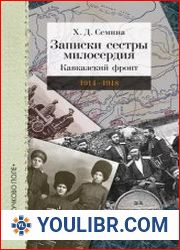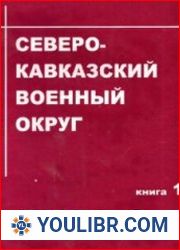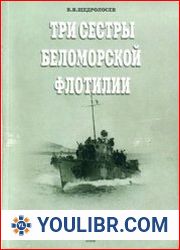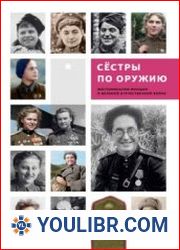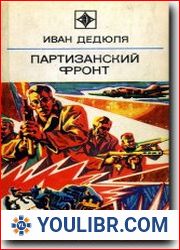
BOOKS - Записки сестры милосердия Кавказский фронт. 1914-1918 гг....

Записки сестры милосердия Кавказский фронт. 1914-1918 гг.
Author: Семина X. Д.
Year: 2016
Format: PDF
File size: 54 mb
Language: RU
Year: 2016
Format: PDF
File size: 54 mb
Language: RU
The memoirs of X. D. Semina reflected the events of the Great War both in the Caucasus (especially the period of the Sarah-Kamyshsky operation) and in Persia. At the same time, the author tries to give a moral assessment of what is happening with her or around her. The unique position of the memoirist - a civilian sister of mercy, the wife of a military doctor, constantly wandering between the front and the rear, allows her to deploy in front of the reader a many-sided panorama of Russian life during the First World War. She describes in detail the life of all layers of the then society in various conditions - both in the nearest front line (Sarykamysh, Van, Urmia), and in the cities of the Caucasus, where the command of the Caucasian army and its units (Tiflis, Kars) was grouped or there was an ordinary carefree life (Baku, Batum), and in the distant rear (in the Volga region and Prikamye).
сюжет книги 'Записки сестры милосердия Кавказский фронт 1914-1918 гг'X D Semina является подробным отчетом о событиях Первой мировой войны на фронте Кавказа, конкретно деятельность SarahKamyshsky, и в Персии. Автор дает моральную оценку событиям и предлагает многогранную панораму русской жизни времен Первой мировой войны. Мемуары уникальны, поскольку написаны от лица гражданской сестры милосердия, жена военного врача, позволяющая всесторонне взглянуть на жизнь на передовой и за кулисами. Книга начинается с опытов автора в Сарыкамыше, Ване и Урмии, где она описывает суровые условия солдат и мирных жителей, живущих в непосредственной близости от линии фронта. Она рассказывает о борьбе солдат, страданиях мирных жителей и разрушениях, вызванных войной. Автор также подчеркивает храбрость и самоотверженность солдат, которые рисковали жизнью, защищая свою страну. The plot of the book 'Записки сестры милосердия Кавказский фронт 1914-1918 гг' by X D Semina is a detailed account of the events of the Great War on the Caucasus front, specifically the SarahKamyshsky operation, and in Persia. The author provides a moral assessment of the events and offers a multifaceted panorama of Russian life during the First World War. The memoirs are unique as they are written from the perspective of a civilian sister of mercy, the wife of a military doctor, allowing for a comprehensive view of life on the front lines and behind the scenes. The book begins with the author's experiences in Sarykamysh, Van, and Urmia, where she describes the harsh conditions of the soldiers and civilians living in the immediate vicinity of the front lines. She recounts the struggles of the soldiers, the suffering of the civilians, and the devastation caused by the war. The author also highlights the bravery and selflessness of the soldiers, who risked their lives to defend their country. تنزيل ملف pdf ملاحظات من أخت جبهة الرحمة القوقازية. 1914-1918. להוריד קובץ PDF Notes of the ster of Mercy Cווקasian Front. 1914-1918. 下载 pdf 文件 高加索陣線慈悲姐妹的筆記。1914至1918。
pdf dosyasını indir Merhamet Kızkardeşi Kafkas Cephesi Notları. 1914-1918. скачать файл PDF Записки сестры милосердия Кавказский фронт. 1914-1918 гг. descargar archivo pdf Notas de la Hermana de la Misericordia Frente del Cáucaso. 1914-1918. download pdf file Scarica il file pdf Note della sorella della misericordia Fronte caucasico. 1914-1918 descarregar ficheiro pdf Notas da irmã da misericórdia Frente do Cáucaso. 1914-1918 PDFファイルをダウンロード 慈悲白人戦線の姉妹のメモ。1914-1918. download pdf file Записки сестры милосердия Кавказский фронт. 1914-1918 гг. PDF-Datei herunterladen Notizen der Schwester der Barmherzigkeit Kaukasusfront. 1914-1918. pobierz plik pdf Notatki ostry Miłosierdzia Frontu Kaukaskiego. 1914-1918. pdf 파일 다운로드 télécharger le fichier pdf Notes de la Sœur de la Miséricorde Front du Caucase. 1914-1918
In den Memoiren von X. D. Semina spiegeln sich die Ereignisse des Großen Krieges sowohl im Kaukasus (insbesondere in der Zeit der Operation Sary- Kamysch) als auch in Persien wider. In diesem Fall versucht der Autor, eine moralische Bewertung dessen zu geben, was mit ihr oder um sie herum geschieht. Die einzigartige Position der Memoirin - eine freiberufliche Schwester der Barmherzigkeit, die Frau eines Militärarztes, die ständig zwischen Front und Rücken wandert - ermöglicht es ihr, dem Leser ein facettenreiches Panorama des russischen Lebens während des Ersten Weltkriegs zu bieten. Sie beschreibt detailliert das Leben aller Schichten der damaligen Gesellschaft unter verschiedenen Bedingungen - sowohl in der nächstgelegenen Frontlinie (Sarykamysh, Van, Urmia) als auch in den Städten des Kaukasus, wo das Kommando der kaukasischen Armee und ihrer Teile (Tiflis, Kars) gruppiert war oder das übliche sorglose Leben verlief (Baku, Batum) und im fernen Hinterland (in der Wolga und in Prikamye).
Las memorias de X. D. Semina reflejaron los acontecimientos de la Gran Guerra tanto en el Cáucaso (especialmente el período de la operación Sary- J Kamysh) como en Persia. Al mismo tiempo, el autor trata de dar una valoración moral de lo que le sucede o a su alrededor. La posición única de la memorialista, hermana librepensadora de la misericordia, esposa de un médico militar, siempre rodando entre el frente y la retaguardia, le permite desplegar ante el lector un panorama multitudinario de la vida rusa durante los años de la Primera Guerra Mundial. Describe en detalle la vida de todos los sectores de la sociedad de entonces en diversas condiciones - y en la franja de primera línea más cercana (Sarykamysh, Wang, Urmia), y en las ciudades del Cáucaso, donde se agrupaba el mando del Ejército del Cáucaso y sus unidades (Tiflis, Kars) o había una vida normal despreocupada (Bakú, Batum), y en a la retaguardia lejana (en el Volga y Pricamier).
The memoirs of X. D. Semina reflected the events of the Great War both in the Caucasus (especially the period of the Sarah-Kamyshsky operation) and in Persia. At the same time, the author tries to give a moral assessment of what is happening with her or around her. The unique position of the memoirist - a civilian sister of mercy, the wife of a military doctor, constantly wandering between the front and the rear, allows her to deploy in front of the reader a many-sided panorama of Russian life during the First World War. She describes in detail the life of all layers of the then society in various conditions - both in the nearest front line (Sarykamysh, Van, Urmia), and in the cities of the Caucasus, where the command of the Caucasian army and its units (Tiflis, Kars) was grouped or there was an ordinary carefree life (Baku, Batum), and in the distant rear (in the Volga region and Prikamye).
As memórias de X. D. Seminoy refletem os acontecimentos da Grande Guerra, tanto no Cáucaso (especialmente o período da Operação de Sarykaska) como na Pérsia. Com isso, o autor tenta fazer uma avaliação moral do que se passa com ela ou ao seu redor. A posição única da memorialista, a irmã livre de misericórdia, a esposa de um médico militar que está sempre entre a frente e a retaguarda, permite-lhe dar um panorama multifacetado da vida russa na Primeira Guerra Mundial. Ela descreve em detalhe a vida de todos os segmentos da sociedade em várias condições - tanto na faixa de apoio mais próxima (Sarykamych, Wang, Urmiya), como nas cidades do Cáucaso, onde o Exército do Cáucaso e suas partes (Tiflis, Kars) estavam reunidas, ou a vida normal despreparada (Baku, Batum), e em uma retaguarda distante (em Vovê) breve e Prikamier).
В мемуарах X. Д. Семиной нашли отражение события Великой войны как на Кавказе (особенно периода Сары- камышской операции), так и в Персии. При этом автор старается дать нравственную оценку происходящему с ней или вокруг нее. Уникальное положение мемуаристки — вольнонаемной сестры милосердия, жены военного врача, постоянно кочующей между фронтом и тылом, позволяет ей развернуть перед читателем многоликую панораму российской жизни в годы Первой мировой войны. Она подробно описывает жизнь всех слоев тогдашнего общества в различных условиях — и в ближайшей прифронтовой полосе (Сарыкамыш, Ван, Урмия), и в городах Кавказа, где группировалось командование Кавказской армии и ее частей (Тифлис, Карс) или шла обычная беззаботная жизнь (Баку, Батум), и в далеком тылу (в Поволжье и Прикамье).
Nelle memorie di X.D. Semina si riflettono gli eventi della Grande Guerra sia nel Caucaso (in particolare nel periodo dell'Operazione di Sar-Kamysh) che in Persia. In questo modo, l'autore cerca di dare una valutazione morale di ciò che le sta accadendo o che le sta intorno. La posizione unica della memorista, la sorella libera della misericordia, la moglie di un medico militare che continua a scorrazzare tra il fronte e la retroguardia, le permette di espandere davanti al lettore una panoramica infinita della vita russa durante la Prima Guerra Mondiale. Essa descrive in dettaglio la vita di tutti i settori della società allora in diverse condizioni, sia nella più vicina striscia di prima linea (Sarykamych, Wang, Urmia), sia nelle città del Caucaso, dove si aggregava il comando dell'esercito caucasico e delle sue parti (Tiflis, Kars), o nella solita vita spensierata (Baku, Batum), e nella lontaria (a Pova) breve e Prikamier).
Les mémoires de X. D. Semina reflètent les événements de la Grande Guerre dans le Caucase (en particulier la période de l'opération Sary-Kamysh) et en Perse. L'auteur s'efforce de donner une évaluation morale de ce qui se passe avec elle ou autour d'elle. La position unique de la mémoire - la sœur libre de la miséricorde, la femme d'un médecin militaire qui erre constamment entre le front et l'arrière, lui permet de déployer devant le lecteur un panorama multiforme de la vie russe pendant la Première Guerre mondiale. Elle décrit en détail la vie de tous les secteurs de la société de l'époque dans diverses conditions - dans la bande de front la plus proche (Sarykamysh, Van, Urmia), dans les villes du Caucase, où le commandement de l'Armée du Caucase et de ses unités (Tiflis, Kars) ou dans la vie ordinaire de l'insouciance (Bakou, Batum), et dans le lointain (en) emprunt et Prikamier).
In den Memoiren von X. D. Semina spiegeln sich die Ereignisse des Großen Krieges sowohl im Kaukasus (insbesondere in der Zeit der Operation Sary- Kamysch) als auch in Persien wider. In diesem Fall versucht der Autor, eine moralische Bewertung dessen zu geben, was mit ihr oder um sie herum geschieht. Die einzigartige Position der Memoirin - eine freiberufliche Schwester der Barmherzigkeit, die Frau eines Militärarztes, die ständig zwischen Front und Rücken wandert - ermöglicht es ihr, dem Leser ein facettenreiches Panorama des russischen Lebens während des Ersten Weltkriegs zu bieten. Sie beschreibt detailliert das Leben aller Schichten der damaligen Gesellschaft unter verschiedenen Bedingungen - sowohl in der nächstgelegenen Frontlinie (Sarykamysh, Van, Urmia) als auch in den Städten des Kaukasus, wo das Kommando der kaukasischen Armee und ihrer Teile (Tiflis, Kars) gruppiert war oder das übliche sorglose Leben verlief (Baku, Batum) und im fernen Hinterland (in der Wolga und in Prikamye).
Las memorias de X. D. Semina reflejaron los acontecimientos de la Gran Guerra tanto en el Cáucaso (especialmente el período de la operación Sary- J Kamysh) como en Persia. Al mismo tiempo, el autor trata de dar una valoración moral de lo que le sucede o a su alrededor. La posición única de la memorialista, hermana librepensadora de la misericordia, esposa de un médico militar, siempre rodando entre el frente y la retaguardia, le permite desplegar ante el lector un panorama multitudinario de la vida rusa durante los años de la Primera Guerra Mundial. Describe en detalle la vida de todos los sectores de la sociedad de entonces en diversas condiciones - y en la franja de primera línea más cercana (Sarykamysh, Wang, Urmia), y en las ciudades del Cáucaso, donde se agrupaba el mando del Ejército del Cáucaso y sus unidades (Tiflis, Kars) o había una vida normal despreocupada (Bakú, Batum), y en a la retaguardia lejana (en el Volga y Pricamier).
The memoirs of X. D. Semina reflected the events of the Great War both in the Caucasus (especially the period of the Sarah-Kamyshsky operation) and in Persia. At the same time, the author tries to give a moral assessment of what is happening with her or around her. The unique position of the memoirist - a civilian sister of mercy, the wife of a military doctor, constantly wandering between the front and the rear, allows her to deploy in front of the reader a many-sided panorama of Russian life during the First World War. She describes in detail the life of all layers of the then society in various conditions - both in the nearest front line (Sarykamysh, Van, Urmia), and in the cities of the Caucasus, where the command of the Caucasian army and its units (Tiflis, Kars) was grouped or there was an ordinary carefree life (Baku, Batum), and in the distant rear (in the Volga region and Prikamye).
As memórias de X. D. Seminoy refletem os acontecimentos da Grande Guerra, tanto no Cáucaso (especialmente o período da Operação de Sarykaska) como na Pérsia. Com isso, o autor tenta fazer uma avaliação moral do que se passa com ela ou ao seu redor. A posição única da memorialista, a irmã livre de misericórdia, a esposa de um médico militar que está sempre entre a frente e a retaguarda, permite-lhe dar um panorama multifacetado da vida russa na Primeira Guerra Mundial. Ela descreve em detalhe a vida de todos os segmentos da sociedade em várias condições - tanto na faixa de apoio mais próxima (Sarykamych, Wang, Urmiya), como nas cidades do Cáucaso, onde o Exército do Cáucaso e suas partes (Tiflis, Kars) estavam reunidas, ou a vida normal despreparada (Baku, Batum), e em uma retaguarda distante (em Vovê) breve e Prikamier).
В мемуарах X. Д. Семиной нашли отражение события Великой войны как на Кавказе (особенно периода Сары- камышской операции), так и в Персии. При этом автор старается дать нравственную оценку происходящему с ней или вокруг нее. Уникальное положение мемуаристки — вольнонаемной сестры милосердия, жены военного врача, постоянно кочующей между фронтом и тылом, позволяет ей развернуть перед читателем многоликую панораму российской жизни в годы Первой мировой войны. Она подробно описывает жизнь всех слоев тогдашнего общества в различных условиях — и в ближайшей прифронтовой полосе (Сарыкамыш, Ван, Урмия), и в городах Кавказа, где группировалось командование Кавказской армии и ее частей (Тифлис, Карс) или шла обычная беззаботная жизнь (Баку, Батум), и в далеком тылу (в Поволжье и Прикамье).
Nelle memorie di X.D. Semina si riflettono gli eventi della Grande Guerra sia nel Caucaso (in particolare nel periodo dell'Operazione di Sar-Kamysh) che in Persia. In questo modo, l'autore cerca di dare una valutazione morale di ciò che le sta accadendo o che le sta intorno. La posizione unica della memorista, la sorella libera della misericordia, la moglie di un medico militare che continua a scorrazzare tra il fronte e la retroguardia, le permette di espandere davanti al lettore una panoramica infinita della vita russa durante la Prima Guerra Mondiale. Essa descrive in dettaglio la vita di tutti i settori della società allora in diverse condizioni, sia nella più vicina striscia di prima linea (Sarykamych, Wang, Urmia), sia nelle città del Caucaso, dove si aggregava il comando dell'esercito caucasico e delle sue parti (Tiflis, Kars), o nella solita vita spensierata (Baku, Batum), e nella lontaria (a Pova) breve e Prikamier).
Les mémoires de X. D. Semina reflètent les événements de la Grande Guerre dans le Caucase (en particulier la période de l'opération Sary-Kamysh) et en Perse. L'auteur s'efforce de donner une évaluation morale de ce qui se passe avec elle ou autour d'elle. La position unique de la mémoire - la sœur libre de la miséricorde, la femme d'un médecin militaire qui erre constamment entre le front et l'arrière, lui permet de déployer devant le lecteur un panorama multiforme de la vie russe pendant la Première Guerre mondiale. Elle décrit en détail la vie de tous les secteurs de la société de l'époque dans diverses conditions - dans la bande de front la plus proche (Sarykamysh, Van, Urmia), dans les villes du Caucase, où le commandement de l'Armée du Caucase et de ses unités (Tiflis, Kars) ou dans la vie ordinaire de l'insouciance (Bakou, Batum), et dans le lointain (en) emprunt et Prikamier).







